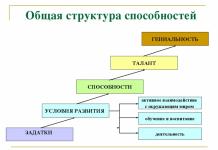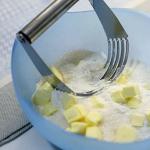This exotic guest is a very rare occurrence in countries other than those where it grows. After all, dragon fruit can be stored in the refrigerator for no more than 7 days. In addition, it does not tolerate transportation very well, especially over long distances. Because of this negative set, dragon fruit, if it reaches our shelves, becomes very dear.
Dragon eye description and origin
America is traditionally considered the birthplace of pitahaya, since mentions of this fruit are found in the history of the ancient Aztecs. The Indians loved dragon fruit for its taste and ability to quench their thirst, because it consists of 85 percent from water. Now pitaya is distributed throughout all countries of East Asia (famous Thailand, tourist Sri Lanka, the Philippines and Vietnam), and also grows in Mexico, Japan, China, Australia and even Israel.
Myths and legends

Description of Dragon Fruit
One ancient legend explains the origin of the name pitahaya as the dragon fruit. After all, even its peel is similar to the scales of mythical dragons. It is said that this is the heart of a dragon, which was obtained from a slain dragon. It was through the love of this fruit that all these mystical creatures were defeated. So we have a lasting memory about the life of dragons.
At their core, the plants on which pitayas grow are climbing cacti, on the edges of the thorny branches, juicy cacti fruits of different colors ripen and fill with juice.
It is noteworthy that the full opening of the flower occurs exclusively at night. The hanging white flowers are very fragrant; when they fade, the fruit ovary appears, this happens in about a month or a month and a half. On farms that specialize in the industrial cultivation of pitahayas, they can harvest a rich harvest of fruit 5-6 times per season.
Dragon heart components:

Exotic fruit
In 100 grams of fruit:
- Low calorie content - only 45-50 Kcal
- Fat content – 0.5g!!!
- Protein content – 0.5g
- Total carbohydrates – 13g
- Group vitamins: C, B1, B3, PP, B2
- Antioxidants
- Fruit acids
- Useful minerals: phosphorus, calcium, iron, potassium, etc.
Exotic pitahaya fruit types and varieties

What varieties of pitaya
Different varieties differ in size, color and structure of the peel (orange-yellow, purple-red, bright pink), color and texture of the delicate pulp (cream-white, pinkish or aggressive red). There may be small bulges on top, a “pineapple” structure or natural scales, which is where the names actually come from: dragon fruit, dragon heart, dragon eye, dragonfruit, etc.
The fruits of dragon fruit or prickly pear are especially useful for people who observe dietary diet. They arrange various fasting days for themselves.
Among all the varieties of variety, pitahaya has become famous mainly for its three representatives, which are the most popular and delicious:

- White (Hylocereus undatus) - also called “dragon fruit” in Vietnam. This is the most exotic and popular variety; it has a pink and red scaly skin on the outside, and inside there is soft and delicate white pulp with a pleasant taste and aroma. Multiple black seeds.
- Red (Hylocereus costaricensis) - Costa Rican pitaya. It has a bright pink-red skin and creamy red flesh with an even richer taste. Small black seeds, like those of the more familiar kiwi.
- Yellow (Hylocereus megalanthus) – “prickly pear” or long yang. It looks like a bright yellow lemon with large pimples. The inside is snow-white with multiple black seeds. It is considered the most fragrant and sweet.
The weight of the fruit varies: from an average apple, approximately 150g, to 700-800g samples. Well, some giants can boast of weight, even a kilogram. The peel is quite soft and can be easily removed with a sharp knife. The taste differs between different subspecies, but it is quite delicate and slightly sweet. Some may find it a little bland. But I haven’t come across any reviews yet that I didn’t like at all.
How to eat pitahaya

First of all, because of its bright and unusual appearance, it is often used as a decoration for a festively laid table. It is recommended to serve the dragon eye fruit chilled so that the delicate taste is sufficiently expressed. Multiple black seeds are also useful, but they must be chewed thoroughly because they are quite long and difficult to digest.
You can cut it lengthwise into two parts and invite your guests to simply enjoy the taste of chilled dragon fruit.
You can cut it into slices, like a watermelon or melon, combining it with other fruits that contrast in color and taste, and placing it on a beautiful festive platter.

Pitaya juice
Perhaps serve it in the form of an exotic salad, the peel will serve as an exclusive dish, and other ingredients should be added to the pulp, but not too strong in taste, so as not to dull the taste of the pitaya itself.
Pitahaya juice and pulp are used for a variety of exotic cocktails and soft drinks. For example, for a refreshing cocktail, mix dragon fruit juice with green lime juice, or at least lemon, but the former will be better. Widely used in local winemaking. You can also make various jams, jellies or preserves from these fruits, add them to sauce or gravy, prepare milk yoghurts, sorbets and ice cream. The flowers themselves are roasted or brewed into aromatic flower tea.
As you can see, the use in the food industry is quite wide; the peel (for decoration), the pulp, the juice, and even unripe fruits - inflorescences - are used.
Health benefits of dragon fruit
Pitaya has many beneficial properties. The main advantage is that it is low in calories. It is very well absorbed, so it is recommended for intestinal diseases.

Vitamins in the heart of the dragon

Dragon eye fruit contraindications and harm

dragon fruit flower
As a certain exotic fruit, it can cause allergic reactions, so people, especially those suffering from this, should eat dragon heart with caution. If no negative consequences arise after taking it, then you can easily begin to actively enjoy this wonderful fruit.
If you have chronic diseases of various types, we recommend that you consult with an experienced specialist before taking pitahaya, in order to avoid negative emotions.
If you eat too many red fruits at once, you may experience a slight red tint to your urine and poop, which is completely harmless.
Give to small children with caution to avoid diathesis or disorder.
In general, there are no contraindications as such, from a scientific point of view. You just need to start eating slowly and slowly.
How to choose and preserve pitaya

How to choose pitahaya
If you want to buy an exotic wonder, follow a few simple rules so as not to be immediately disappointed.
- Look at the color of the skin, it should be bright in color and without suspicious dark spots. This indicates that the fruit is already overripe.
- A quality dragon fruit will be slightly soft, like a ripe kiwi, but not sour. Too hard is also not good, but in extreme cases it can be left to ripen in the refrigerator.
- Dry growths on the leaves indicate that the fruit has been stored for a long time after being picked. But the fresher the pitaya, the more beneficial substances it can convey to you.
Recent studies have shown that this exotic fruit can relieve stomach pain and is very useful for diabetics.
So, the dragon's eye is not only a healthy and tasty vitamin product, but it will also bring purely aesthetic pleasure from contemplating and eating such an unusual and unusual species for us.
“Heart of the Dragon” sounds beautiful and unusual. Behind this name lies an exotic fruit, pitahaya, growing in tropical forests. Residents of our country are not very familiar with the fruits of the plant, because they are rarely found in stores. Nevertheless, pitaya remains the owner of excellent taste, beneficial and nutritional properties. And the areas planted with trees and blooming flowers resemble fairy-tale gardens.

Names and varieties
Dragon fruit, pitahaya, pitaya, dragon - all these are the names of one exotic fruit growing in the lands of Mexico, South and Central America. The plant belongs to the cactus family.
Today, the cultivation of dragonfruit is carried out by residents of the south-eastern part of Asia. Most pitaya is exported worldwide from Thailand, Indonesia, Vietnam, Philippines, Sri Lanka, Taiwan, China and Malaysia. The optimal climatic conditions for obtaining a good harvest of exotic cactus fruits are the subtropics and tropics.
The name of the fruit has English roots, and is translated as “dragon heart” or “dragon fruit”. However, back in the era of the ancient Aztecs, this plant was called dragonfruit. Indian tribes were the first to eat the white pulp because Mexico was the cactus’ homeland. The ground seeds were used as a seasoning for dishes.

The Mexican people often tell legends according to which the appearance of the fruit is associated with the dragons living at that time. They claim that the birth of pitaya occurred in the midst of war. It was then that the tired dragons could no longer spew fire from their mouths, but instead spat out bright fruits. The ancient Indians believed that somewhere inside, near the dragon's heart, this amazing dragonfruit was located. To get as much delicacy as possible, they had to destroy all the dragon warriors.
Today, pitahaya is one of the most beautiful and mysterious fruits, distinguished by its unusual shape and color. It grows well in the southern lands and has an amazing taste. True, its appearance resembles the scales of extinct reptiles or a dragon's eye, which only brings back memories of ancient legends. By the way, pitahaya pulp varies in color depending on the type of fruit.
Common shades include white, reddish, hot pink, and even purple. The tropical fruit also differs in shape, size, and number of scales on the peel.
Let's look at the most popular types of unusual plants.
- Pitaya "White" (Hylocereus Undatus) is a very common variety of fruit. It has a rich taste, but a little bland compared to others. The white pulp characteristic of the name is filled with many black seeds. The aroma is reminiscent of something herbal. The external color of the fruit is red or bright pink, while the scales are light green.
- Yellow Pitaya (Hylocereus Megalanthus). This variety is rarely grown and is called “prickly pear”. The surface layer is yellow, the scales resemble pimples. Inside the fruit is snow-white, diluted with black seeds. The taste of yellow dragonfruit is the sweetest and most aromatic.
- Red Pitaya (Hylocereus Costaricensis) common in the lands of Costa Rica, which is why it is often called Costa Rican. It has a rich pink skin with a purple tint. The pulp of the dragon fruit is similar in color, but is more red. There are many small seeds present. Produces a strong fruity aroma.


What does it look like and what does it taste like?
Dragon fruit is native to South America and Mexico. Gained wide popularity in the southeastern regions of Asia and some parts of Central America. For the full growth and ripening of sweet fruits, a dry tropical climate with many deciduous forests is suitable.
The pitaya tree reaches a height of 10 meters. Specifically for growing this representative, gardeners use various support and garter means. Only with their help can you preserve the desired appearance of a branched cactus, which grows greatly. For this purpose, the entire crown is specially collected into one dome, rising above the ground.
From a botanical point of view, the plant is considered epiphytic, so the fruits, due to aerial roots, manage to cling to tree trunks and hold on to them during long ripening. Despite the fact that they grow on the surface of the entire stem, the epiphyte cactus does not take nutrients from the tree.
Dragon fruit strives for heights where there is a lot of light and warmth. It is at the top that it extracts the required amount of moisture from the air. In addition, the culture manages to find organic elements in the cracks of the trunks. The plant takes root deep underground, where they undergo a period of development, after which they spread along the soil in the form of individual stems.

The triangular stems of pitahaya are modified branches. Externally, these are juicy, fleshy stems 5 cm wide. They contain large amounts of water and nutritional components that the tree needs during drought and heat. The stems are covered with small thorns, which are actually buds that will later give rise to new branches and dragonfruit flowers.
Flowering occurs quite quickly, in an incredibly short period of time. One night is enough for the first flowers to appear, colored pink or white, emitting a light herbal aroma.

Pollination of the tree occurs with the help of insects. When the withering of the variegated buds has ended, the period of fruit set begins. The full development of the cactus strongly depends on climatic conditions - the ideal is the dry climate of the tropics. Already 35-50 days after flowering, the tree becomes overgrown with beautiful, bright fruits. During the year (one season), pitahaya can bear fruit up to 6 times with egg-like fruits. This confirms its incredibly high yield.
Those who are going to grow crops on their plot should know that an excessive amount of moisture is detrimental to the plant - the buds may fall off and the fruits will begin to rot.
If you cut the fruit in half, you will find a soft consistency, similar to thick sour cream. The taste is reminiscent of something banana with a kiwi flavor. True gourmets compare the taste of pitahaya with these fruits.

Dragonfruit pulp can be added to various dishes or eaten with other fruits, the main thing is to avoid spicy and very sweet ingredients, since against the background of such a combination the taste of pitahaya will simply be lost.
Salads, desserts, yoghurts, smoothies, cocktails, jams and jellies are prepared based on the Thai exotic fruit. The fruits are also found in recipes for cold drinks and fruit wines.


Don’t forget about the beautiful white flowers, which not only act as decoration, but are also added to tea for aroma.

Calorie content
The nutritional value of 100 grams of exotic fruit is 50 kcal. Proteins occupy 0.49 g, fats - 0.29 g, and carbohydrates - 12 g. A significant place is given to water - 91 g. In addition, pitahaya contains a large amount of valuable fiber and coarse fibers, which have a positive effect on the digestive system and bowel function.
Chemical composition
- vitamin B1;
- vitamin B2;
- vitamin C;
- vitamin PP;
- vitamin E;
- ash;
- a nicotinic acid;
- ascorbic acid;
- calcium;
- iron;
- phosphorus;
- beta-carotene;
- thiamine;
- riboflavin;
- potassium;
- tocopherol

Benefits and harms
The tropical fruit is known for its beneficial properties. Its composition is filled with various vitamins and minerals. Micro- and macroelements that strengthen human immunity play a particularly important role.
It is impossible not to note the special quality of eating dragon fruit - it cleanses and stimulates the intestines due to the high level of coarse fibers.
The main benefits of the fruit:
- starts all metabolic processes in the body;
- normalizes fat metabolism;
- accelerates the absorption of nutrients into the blood;
- removes harmful and toxic substances, excess liquid and salts;
- strengthens dental and bone tissue;
- improves the functioning of the nervous system;
- triggers the protective functions of the immune system, preventing colds, viral and other diseases;
- has an anti-inflammatory effect;
- synthesizes natural collagen;
- protects cells from external influences, including free radicals;
- regulates the process of blood clotting;
- normalizes carbohydrate breakdown due to high iron content;
- strengthens the entire skeletal system as a whole;
- has an oxidizing effect;
- stimulates the growth and development of a healthy body, which is especially important for children;
- successfully forms antibodies and red blood cells in the blood;
- strengthens the walls of cell tissues;
- Thanks to the presence of special acids, it regulates the level of “good” cholesterol, while simultaneously removing “bad” cholesterol from the body.
- supports normal functioning of the heart and blood vessels;
- provides muscle tone and strength;
- cell membranes are formed due to lipids contained in the seeds of the fruit;
- inhibits the absorption of sugar into the intestines, thereby reducing the GI (glycemic index) of the food eaten;
- indicated for type 2 diabetes due to its ability to lower blood sugar and insulin;
- improves mood and relieves stress.

Dragon fruit is of particular importance for the health of pregnant and lactating women. However, before including exotics in your daily diet, you should consult a specialist for allergies and other contraindications. The high content of calcium and phosphorus ensures the full growth of the bones, teeth and nails of the unborn baby. In addition, by consuming this delicacy, the expectant mother will be calm about the child’s skeletal and cardiac system.
Additional properties for pregnant women:
- reduction of swelling;
- maintaining the heart muscle;
- liberation of the body from radicals and toxins;
- eliminating unnecessary irritability;
- antifungal and antibacterial action;
- replenishment of mineral deficiency.
Surprisingly, such a strange and mysterious product has practically no contraindications. Of course, the main prohibitive point can only be individual intolerance to the fruit. An allergic reaction mainly occurs to ascorbic acid.

An important point: overeating red pitahaya will cause your urine to turn the same color. But don't worry, this is not a sign of illness or allergies, there will be no harm.
How to choose the right fruit?
Not all shops and markets are full of such unusual fruit, brought mainly from Thailand and Vietnam. Before purchasing, carefully inspect the fruits: there should be no damage, dents, or dark spots on them. The color of the peel of a quality product does not differ from its name. That is, if it says “Red Pitahaya,” then the color of the shell should match the inscription.

Freshness can be determined by touch. Soft means ready and suitable for consumption. Purchased pitaya with a hard surface needs to ripen - to do this, put it in a cool place for a couple of days. This is the only way she can demonstrate all the taste qualities.
Remember, after 5 days it will begin to lose its nutritional value and usefulness, so you need to have time to eat the juicy fruit.
Before you try this fragrant tropical delicacy, you need to clean it properly. Pitaya is eaten in different ways.
Variations of cleaning and use:
- Peel the top and eat the pulp;
- cut into slices;
- cut the skin, tear it off, and the contents are ready to eat;
- Divide the fruit into two parts and eat the snow-white pulp with a spoon.


In American cuisine, a particularly popular dessert recipe is a delicate and airy combination. To do this, you need to beat condensed milk, Mascarpone cheese, pitahaya and almonds in a blender.
An excellent cooling drink would be water with lime or lemon and dragonfruit. If you dry the flowers of the fruit, you can make an excellent aromatic spice, for example, for tea.
Recipes
Here are a couple of interesting recipes that you can please your household.
Pitaya fruit ice
Ingredients:
- red fruits - 4;
- banana - 1;
- ripe mango - 100 g;
- pineapple - 100 g;
- almond milk - 200 ml.
Preparation:
- mix all ingredients in a blender;
- after that, pour the resulting mass into ice cream molds with a special wooden stick;
- Leave the workpiece in the freezer until completely frozen (preferably overnight).
This healthy and energy drink is very easy to prepare. Just add all the ingredients into a blender glass and mix. Pour the prepared liquid into glass jars and place in the refrigerator to cool. It's better to drink from a straw.

“Dragon's Eye” is a truly amazing fruit that was discovered many centuries ago by the inhabitants of Mexico. Its beneficial and nutritional qualities have given it wide popularity not only in its native places - Mexico, South America and Asia, but also in Russia. Today, large chains of stores and markets are trying to bring such exotica. In large cities, the Thai red variety is found mainly. It is important to purchase ripe, fresh fruit that retains the same taste and herbal smell. You can understand why the ancient Aztecs admired it so much only by trying dragon fruit or pitahaya.
For an overview of the exotic fruit, watch the following video.
Welcome readers of the site “I and the World”! Many people like exotic fruits, and one of them is the “dragon's eye” - a fruit that grows in the tropics of China, Vietnam, Thailand, and Indonesia. In the article you will see a photo and read a description of an ancient tree.
Another name for the fruit is longan and it grows on the evergreen tree of the same name.
They first heard about it when one of the travelers brought several seedlings of this tree from southern China as a gift to the Queen of Thailand.
How does a tree and its fruit grow?
It reaches a height of 12 meters, and the crown is so spreading that it can be up to 14 meters wide. The plant loves warmth and abundant moisture, but can withstand temperatures of -2 degrees. The fruits ripen in clusters, like grapes, but are slightly larger in size and have a different color (brown to orange).

The flesh is sweet, translucent, with a slightly musky taste and has the consistency of jelly. And inside there was a large, black seed. If the fruit is cut in half, the cut looks like a dragon's eye.

Some gourmets believe that the taste is reminiscent of lychee. This is a pink exotic fruit with a skin reminiscent of a pineapple with sweet and sour, white and very juicy pulp. For some, the taste resembles currants, for others, strawberries. By the way, lychees are also called the “dragon’s eye,” only squinted, because the seed has an oval shape.

But let's return to longan. Despite their small size, fruits have many useful properties: they contain fats, proteins, acids, various vitamins and minerals. The leaves contain natural antioxidants: quercitrin and quercetin. Extracts are prepared from flowers and seeds that are used to treat oncology. The pulp of the fruit helps well with rising temperatures, as well as for the prevention of diseases of the gastrointestinal tract. In general, the fruit reduces heart rate and causeless anxiety, after which sleep and rest will be peaceful.

Despite all the great benefits, “dragon’s eye” should not be eaten in large quantities by people with diabetes - the calorie content per 100 grams is 60 calories.
How to eat the fruit, i.e. how to peel it?
Using a knife, or you can use your hands, press on the skin and squeeze out the pulp. Remove the pit and you are ready to eat. At room temperature, the fruit will not last long due to the high sugar content, but in the refrigerator it will last for almost a week. You can freeze or dry it, then the fruits will last much longer.

From Thailand and some other countries, longan is exported worldwide at a price of $2 per kg. And if you come to Asia, you can buy a large basket of different fruits for a small amount.
If you want to grow longan at home, you need to take seeds only brought from the homeland of the fruit: Thai, Vietnamese, Chinese or from another Asian country.
Those brought to your country will not be suitable, because they are imported immature, and these have zero germination rate. The seeds can be sprouted or placed immediately in loose, soft soil and watered generously with warm water. A box of soil can be placed on a radiator and in a couple of weeks sprouts will appear. Replant them all separately from each other and in 3-5 years a fruit-bearing tree will grow in your home.

It is better, of course, to go to the homeland of tropical fruits, for example, to Pattaya or another Thai city, enjoy tropical fruits and bring different seeds. But the soil cannot be removed, even on the roots of seedlings.
I would like to say about one more “dragon” fruit - pitaya or pitahaya, incredibly beautiful and unusual in appearance.

White pulp with black seeds tastes like banana and kiwi. This fruit is sometimes called the “heart of the dragon.” Doesn't it look like it?
You learned the names of some exotic fruits, what they taste like and how much they cost. And the reviews of tourists who have tasted the “dragon’s eye” are, of course, different. Well, the taste and color...
See also video:
Pitahaya or dragon's eye is a relative of sweet pitaya, the fruit of a plant from the cactus family, genus Hylocereus. Visually, the culture resembles an ordinary tree, a palm tree. However, in fact it is a climbing epiphytic liana-like cactus. The plant's homeland is Central and South America, Mexico. Currently, pitahaya is cultivated in the Philippines and Hawaii, Australia, Thailand, Vietnam, Indonesia, Sri Lanka, Malaysia, Japan, China, Armenia, and Israel.
Dragon fruit is a heavy fruit, weighing up to 1 kilogram and elongated in shape. It tastes like and. The exotic fruit is a low-calorie product (100 grams contains 30 calories), rich in microelements (iron, calcium, phosphorus) and C. Pitahaya pulp improves the condition of the digestive tract, accompanied by high acidity, lowers blood levels, normalizes the function of the endocrine glands (useful) .
According to legend, the fruit embodies the fiery essence of the dragon, which resembles the flame of an animal. It is believed that every person who eats pitahaya experiences a surge of strength and courage. And doctors have confirmed the beneficial effects of feathered fruit on the functioning of the gastrointestinal tract and heart.
Botanical description
 The dragon's eye is a climbing epiphytic cactus adapted to life in tropical climates. Dragon fruit only blooms at night. The flowers are large, white, and emit a pleasant aroma. The size of the fruit, the color of the skin and pulp depend on the type of plant. In good years, you can get up to 6 harvests from one hectare of crop. The pulp of the fruit contains small black seeds, rich in valuable lipids, which must be chewed, since they are not digested in the “whole” form in the human body. The skin of pitahaya is smooth, covered with leaf-like growths, visually reminiscent of a frozen flame of fire, and is inedible.
The dragon's eye is a climbing epiphytic cactus adapted to life in tropical climates. Dragon fruit only blooms at night. The flowers are large, white, and emit a pleasant aroma. The size of the fruit, the color of the skin and pulp depend on the type of plant. In good years, you can get up to 6 harvests from one hectare of crop. The pulp of the fruit contains small black seeds, rich in valuable lipids, which must be chewed, since they are not digested in the “whole” form in the human body. The skin of pitahaya is smooth, covered with leaf-like growths, visually reminiscent of a frozen flame of fire, and is inedible.
Interestingly, excess moisture contributes to premature falling of flowers and rotting of fruits. Unripe fruits are often pecked by birds.
- Costa Rican (costaricensis, polyrhizus). The flesh and skin of the fruit are red.
- Yellow (megalanthus). The pulp is white, the skin is yellow.
- Red (undatus). This is the most common type. The fruit pulp is white, the peel is red-pink.
Dragon fruit is low-calorie, sweetish in taste (sometimes bland), suitable for consumption raw. The pulp of the fruit is added to salads and used as a base for making wine. Pitahaya is eaten chilled, separately from dishes with a strong taste. The flowers are edible and are added to...
Eating Costa Rican dragon fruit with purple flesh may cause pseudohematuria, a harmless condition in which the urine and feces change color (turn red).
Dragon fruit is easily damaged when pressed, making it difficult to transport. This explains the high cost of the product in countries where the fruit is not cultivated.
Chemical composition
A representative of the sweet pitaya of the cactus family, it consists of 90% water and has a rich vitamin and mineral composition. fruits help with stomach pain, support the functioning of the thyroid gland, and have a positive effect on the cardiovascular system.
Dragon's eye seeds are a source that improve the condition of people suffering from diabetes and increase visual acuity.
The greatest value for the human body is provided by the fruit in its raw form. At the same time, it is subject to various types of culinary processing: boiling, baking, frying. Sherbet, sauces, preserves, jams, and wine are made from it.
In appearance, pitahaya resembles, the consistency of the pulp is similar to, and the taste is similar to banana and kiwi. The strongest aroma is the yellow “dragon fruit”. In addition, it is the sweetest among all representatives of its genus.
To eat or not to eat?
 Pitahaya is a dietary product recommended for the dietary table.
Pitahaya is a dietary product recommended for the dietary table.
What are the health benefits of dragon fruit?
- Rich. These compounds neutralize free radicals, which cause aging of the body and the formation of cancer cells. With regular consumption of exotic fruit, the skin will become younger and denser.
- Contains a lot of fiber. Removes waste, toxins, regulates intestinal function.
- Has anti-inflammatory properties. Facilitates the course of chronic diseases.
- Regulates blood levels.
- Increases skin elasticity, treats acne (when used externally in the form of masks).
- Resists the development of respiratory diseases, increases the number of leukocytes in the body, preventing the growth of bacterial and fungal infections.
- Vitaminizes the body.
- Improves vision.
- Promotes systematic weight loss.
- Increases appetite.
- Prevents arthritis, relieves joint irritation, reduces swelling.
- Heals cuts and wounds.
- Strengthens tooth enamel.
- Has a beneficial effect on the nervous system.
A medicine that stimulates blood circulation and relieves spasms is prepared from the stems and flowers of dragon fruit. Local residents of Thailand use the juice from the plant as an anthelmintic.
Pitahaya is an exotic fruit that can cause heartburn, flatulence, diarrhea and food allergies. When using for the first time, you should limit yourself to one slice of the fruit and look at the body’s reaction. In the absence of side effects, the amount of fruit consumed at a time is gradually increased.
Children under 3 years of age are contraindicated to include dragon fruit in their diet, as it can cause diathesis.
 There are 4 methods on how to properly consume dragon fruit.
There are 4 methods on how to properly consume dragon fruit.
- Preparing pitahaya. Choose ripe fruits with pink or bright red skin and soft flesh. Avoid fruits with brown dry spots, dents, or thorns. Cut the pitahaya in half. Scoop out the pulp with a spoon. In a ripe fruit, it is easily separated from the peel. Refrigerate it before using.
Remember, dragon fruit skin is inedible and if ingested, it causes cramps and stomach pain.
- Making pitahaya kebab. Pre-soak wooden skewers in water. This will prevent charring of the raw materials during frying of the product. Light the grill. Prepare the fruits: cut the fruits (pitahaya) into pieces and thread them onto skewers. Place the kebabs on the grill. Cook until browned, then remove from heat. Serve with a bowl of sugar for sprinkling.
- Making a fruit cocktail. Prepare the fruit. Dragon eye goes well with strawberries, peaches, bananas, and blueberries. First of all, cut one pitahaya in half, remove the pulp, and chop. Wash 500 grams of blueberries. Peel one banana and slice. Choose a cocktail base. It can be whole, soy, nut or yogurt. To diversify the taste, additional ingredients are added to the fruit cocktail: sugar, syrup, juice, almond oil. All components are placed in a blender bowl, the contents are thoroughly beaten until smooth.
If the cocktail turns out to be thick, dilute it with water, juice or milk. Add to too liquid mousse. Pour the contents into glasses and garnish with fruit and straws before serving.
- Pitahaya sorbet. Process the fruit: peel, cut, carefully remove the pulp. Save the halves for serving, they will serve as plates. Pre-chill them in the freezer. Mix the ingredients for sorbet: 30 grams of sugar, 170 milliliters of water, 15 milliliters of juice, fruit pulp. Beat in a blender. Pour the resulting mixture into an ice cream maker and freeze the sorbet according to the manufacturer's instructions. Place the pitahayas in halves and serve with a rich muffin or fluffy sponge cake.
Before peeling the fruit, wash it thoroughly. Please note that the surface of the fruit should not be damaged, otherwise pathogenic bacteria can penetrate into the pulp through cuts or dents, causing rot of the product and leading to human poisoning.
Conclusion
Pitahaya is a fragrant, slightly sweet fruit with small growths that are yellow, red or purple. The pulp is white, pink, filled with small black seeds. The bushy tree-like cactus is actively used in cooking for the production of alcoholic beverages, sorbets, yoghurts, jams, sauces, jellies, candies, ice cream, and dairy products. The peel is inedible; in addition, it may contain harmful substances (pesticides).
Pitahaya pulp is a low-calorie dietary product (30 calories per 100 grams), with a taste reminiscent of kiwi and banana. It has a high content of iron, potassium, phosphorus, ascorbic acid and carbohydrates. According to the results of medical research, scientists have concluded that the fruit is useful for people with endocrine diseases, suffering from diabetes, and stomach pain. Prickly pear strengthens the immune system and normalizes the functioning of the cardiovascular system. The main condition is to choose high-quality fresh fruit. Shelf life: no more than 3 days in the refrigerator. Ripe pitahaya is soft and rich in color. And the unripe one is hard to the touch and pale. Stains, mold deposits, wrinkles and cracks on the peel are reasons to refuse to purchase the product.
Interestingly, a bland taste is normal for this fruit, the main advantage of which is its unusual impressive appearance. Pitahaya seeds are difficult to digest in the gastrointestinal tract, so they should be chewed thoroughly. Before use, the fruit is kept in the refrigerator for 2-3 hours. This improves the taste of the fruit and makes its herbal aroma richer.
Despite the undeniable advantages of dragon fruit, remember that it is primarily exotic, which may not be accepted by the human body and cause an undesirable allergic reaction. Be careful with your diet and introduce new foods in small doses (15-50 grams)!
Nowadays you won’t surprise anyone with overseas fruits, but there are still some that baffle you. For example, pitahaya is a dragon fruit, and the question immediately arises: how to eat it correctly and what it tastes like. Inquisitive people are interested in where and how pitahaya grows, why it is useful and how to choose. There are countless names for this exotic fruit: pitahaya, pitaya, dragon fruit, eye, heart, berry and even egg. And also dragonfruit and prickly pear. Choose what you like and remember.
Why dragon? Perhaps because the fruits of the vine are scaly, similar to the scales of dragons. According to one of the eastern legends, dragons had fruit instead of fire. When they could not breathe out fire, they vomited pitahaya. According to legend, people ate the delicious fruits and the dragons became extinct.
Look carefully at the pictures; it is difficult to confuse it with other fruits.

What does pitahaya look like?
It is difficult to say whether pitahaya is a tree or a bush. The plant belongs to the cactus family and does not look like a tree, but rather like a fancifully climbing tree-like cactus.
In the photo you see what pitahaya looks and feels like:

Interesting! The plant blooms exclusively at night. The flowers bloom at the ends of the vine - white and extremely fragrant. Appear strictly on the 1st and 15th days of the month.
After 30-50 days, fruits are set. It is noteworthy that the vine is capable of bearing fruit up to six times a year.
The fruits of the dragon's eye look unusual: the size of a large grapefruit, somewhat elongated in shape and bright pink in color. A distinctive feature is large scales with light green tips. This is roughly the structure of a pineapple. The fruit is endowed with delicate pulp with many small seeds. The color of the flesh varies, from pale purple to white.
What does the fruit taste like? The pulp is tender, the taste is a little similar to banana and kiwi, when compared with the fruits we are familiar with. But, according to reviews, the taste is not very well expressed, sometimes a bit bland.
Pitahaya varieties
There are many types of edible dragon fruit, they differ in the size of the fruit, the color of the pulp and skin, and the texture of the surface. The most common:
- Red pitaya. The skin is bright pink, the flesh is white, with a fresh taste and herbal aroma.
- Costa Rican. The skin and flesh are red.
- Yellow (white). The skin is yellow, with white flesh. The variety is considered sweeter and more aromatic.

Where does dragon fruit grow?
Europeans learned about the edible fruit from the natives of America. The first mention dates back to the 13th century, and is found among the Aztecs. The ancient Aztecs ate the fresh pulp, used the seeds of the fruit, fried them and ground them into flour.
Now the shrub is specially grown for its fruits in South and Central America, Israel, the Philippines, Thailand, Indonesia, and Vietnam.
How to eat pitahaya
It's unfortunate, but the taste of a dragon's heart is far inferior to its appearance. A little sweet, not pronounced, and not too aromatic.
How to clean? Don’t even think about peeling with a knife; residents of countries where dragon fruit grows will laugh for a long time. How to eat pitaya? There are several known methods shared by residents of countries where pitahaya grows.
- Peel off the skin, like a banana, by pulling it down and start tasting.
- Cut in half and scoop out the pulp with a spoon.
- You can immediately remove the skin completely and cut the pulp into slices - look at the photo.
The skin of the fruit is not edible.


Interesting! Dragon fruit isn't just something you can eat. In the countries where they grow, cactus fruits are used in the production of perfumes and cosmetics - shampoos, creams and masks.
In countries where dragon fruit is common, it is not only eaten fresh. Exotic fruits are actively used in cooking. The main purpose is the production of alcoholic beverages. Homemade wine is incredibly popular among Mexicans. The white flowers of the vine are brewed and drunk as tea.
Delicious sorbet, jams and jellies are made from the pulp and juice of pitaya, put into sweets, ice cream, and sauces. Added to dairy products - yogurt.
Tip: The flavor of dragon's eye will be enhanced if you refrigerate the fruit before eating.
Dragon fruit calories
Pitahaya can rightfully be included in the list of dietary products. The calorie content is almost negligible - 45-50 kcal. per 100 gr. pulp.
Due to its low nutritional value, the fruit is used for weight loss - it is filling, but will not add fat cells.
How to choose ripe fruit
If you want to fully enjoy the taste of real pitahaya, make your choice responsibly and knowledgeably. Feel the fruit, take it evenly soft over the entire surface. Check for stains and dents.
Important: for the red variety of dragon's eye, give preference to fruits with a darker color, they have a richer taste.

Beneficial properties of pitahaya
Before you eat pitahaya, it would be a good idea to learn about its beneficial properties. Dragon fruit is not only tasty, but also healthy. You always want to learn more about unfamiliar foods, so I suggest you learn more about the natural chemical composition of pitaya.
The fruit contains fats, carbohydrates, proteins, healthy fiber, water and ash. In addition to vitamins C, PP and group B, dragonfruit contains iron, phosphorus, potassium and calcium. Who will benefit from eating the fruit:
- Tendency to constipation. The small seeds contained in the pulp perfectly cleanse the intestines.
- According to scientists who studied the plant, the fruits should be eaten for stomach pain.
- The tannin found in the seeds is useful for improving vision.
- Has a beneficial effect on the state of the endocrine system.
- It has a positive effect on the blood vessels of the body and the heart.
- In diabetic patients, it reduces blood sugar levels.
Harm to pitahaya
Before eating an unfamiliar fruit, it is advisable to understand whether our curiosity will harm the body.
- When you meet pitaya for the first time, first cut and eat a tiny piece to check the body’s reaction - an allergy is possible.
- Avoid exotic foods if you are prone to flatulence, heartburn, or intestinal upset. A similar reaction occurs with excessive consumption of fruits and in healthy people.
- Do not give this treat to small children, as there is a high risk of developing diathesis and diarrhea.
Video: how to eat pitahaya. May it always be tasty and healthy for you.


















